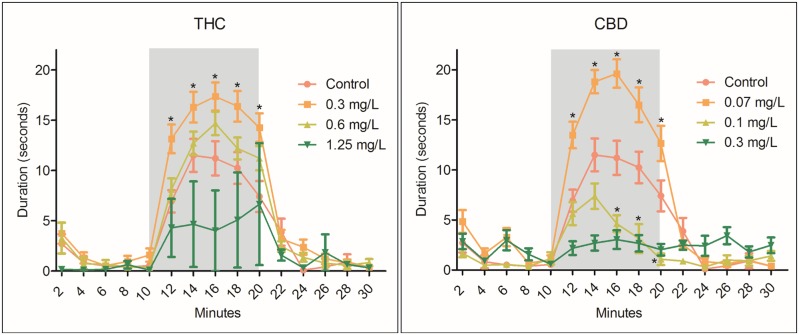Figure 2.
Zebrafish larvae at 96 hpf were monitored using a ViewPoint ZebraBox for 30 min (0–10 min, light; 10–20 min, dark [grey box]; 20–30 min, light). Duration of movement (seconds) at a velocity ≥ 5 mm/s was collected at 2 min intervals and compared with control. Behavioral assessment was specific only to larvae displaying a touch response and uninhibited phenotypes; therefore, the full range of concentrations-response is not available. Larvae exposed to 0.3 mg/l THC exhibited significant (*) hyperlocomoter activity compared with control in dark periods (12–20 min); however, 1.25 mg/l THC reduced overall duration of movement at 16 min. Similarly, CBD significantly stimulated locomotor activity at 0.07 mg/l, but larvae exposed to 0.1 and 0.3 mg/l CBD exhibited hypolocomoter characteristics. Data were analyzed on the average distance per vial (n = 3) using two-way analysis of variance with repeated measure followed by Bonferroni post hoc test ± SEM (p ≥ .05) (n = 3 vials; 7–10 larvae per vial).

